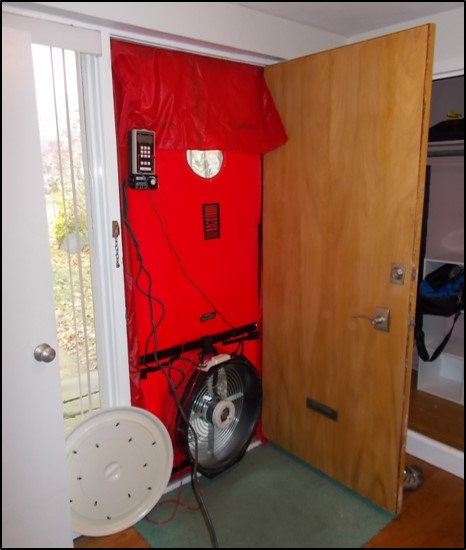

The 2018 IRC/IECC requires a post-construction blower door test to verify that each house has an acceptable air leakage rate.


A blower door is a fan that is installed in an exterior door of a house. As it draws air out of the house, it creates depressurization that pulls outdoor air into any openings in the building envelope.
A high-accuracy gauge is used during the test to measure both the amount of house depressurization (in units of Pascals) and the amount of air flowing through the fan (in cubic feet per minute - CFM).
The result of a blower door test is a measurement of CFM50: the amount of air flow, in cubic feet per minute, required to depressurize the house to 50 Pa of pressure.
The video below show the steps taken during a typical blower door test:
Note: This Fine Homebuilding video includes footage of Larry Armanda, who worked for many years on weatherization and energy efficiency programs in Pennsylvania. Larry passed away in 2016 and is missed by many who appreciated his warmth, knowledge, and commitment to the industry.
